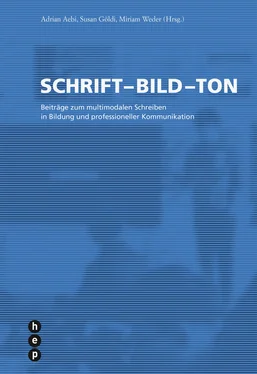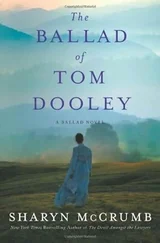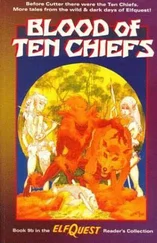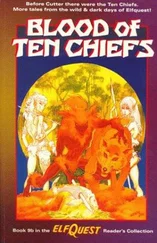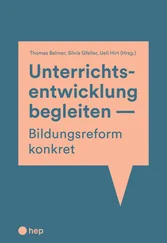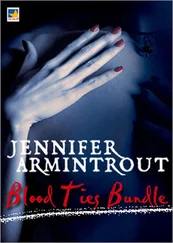This chapter has proposed a way of recognizing and analyzing resources drawn on in producing voice in a range of genres and modes. Voice is about negotiating amongst a set of choices. Allowing students the opportunity to work with various media can enable them to experiment with the properties of these and exploit their affordances in more mindful ways. To develop academic voice, students can be encouraged to recognize constraints – both working within them and using a variety of resources to counterbalance them. My aim has been partly to look for semiotic categories that work across modes in order to devise metalanguages for teaching and learning. These include the concepts of engagement; citation; provenance; transformation; transduction. Most importantly, a metalanguage gives one the tools to think about things in ways that we would not otherwise have had. In this sense metalanguages serve as a way of «verbalising what you know in relation to other ways of knowing» (Thesen 2001, 143). This is important for enabling student access into academic discourse. It can also have important implications for assessment practices. Effective teaching of writing and text construction in all its forms thus involves a dialogue between the culture and discourses of academia and those of students, offering students from diverse backgrounds an empowering and critical experience, not just pathways to established conventions.
Archer, A. (2010). Challenges and Potentials of Writing Centres in South African Tertiary Institutions. South African Journal of Higher Education, 24 (4), 495–510.
Archer, A. (2013). Voice as Design: Exploring academic Voice in multimodal Texts in Higher Education. In M. Bock, & N. Pachler (Eds.), Multimodality and Social Semiosis. Communication, Meaning-Making, and Learning in the Work of Gunther Kress (pp. 150–161). New York and London: Routledge.
Archer, A. (2018). Academic Voice re-imag(in)ed: Interest and Design in Artwork and three dimensional Artefacts. Multimodal Communication, 7(1). Doi: https://doi.org/10.1515/mc-2017-0016
Archer, A., & Björkvall, A. (2018). Material Sign-Making in diverse Contexts: upcycled Artefacts as refracting global / local Discourses. In A. Sherris, & E. Adami (Eds.), Making Signs, translanguaging Ethnographies: Exploring urban, rural and educational Spaces (pp. 45–63). Clevedon: Multilingual Matters.
Bakhtin, M. (1981). From the Prehistory of novelistic Discourse. In M. Holquist (Ed. and trans.), The dialogic Imagination. Four Essays by M. Bakhtin (pp. 41–83). Austin: University of Texas Press.
Bell, S. (2016). Writing against formal Constraints in Art and Design: Making Words count. In A. Archer, & E. Breuer (Eds.), Multimodality in Higher Education (pp. 136–166). Leiden: Brill.
Björkvall, A. (2018). Critical Genre Analysis of Management Texts in the public Sector. Towards a theoretical and methodological Framework. In D. Wojahn, C. Seiler Brylla, & G. Westberg (Eds.), Kritiska text- och diskursstudier (pp. 57–80). Huddinge: Södertörns högskola.
Blommaert, J. (2005). Discourse. Cambridge: Cambridge University Press.
Clark, R., & Ivanicˇ, R. (1997). The Politics of Writing. London and New York: Routledge.
Cope, B., & Kalantzis, M. (Eds.) (1993). The Powers of Literacy. A Genre Approach to teaching Writing. London, Washington: Falmer Press.
Elbow, P. (2007). Voice in Writing again. Embracing Contraries. College English , 70 (2), 168–188.
Huang, C., & Archer, A. (2014). Fluidity of modal Logics in the Translation of Manga: The Case of Kishimoto’s Naruto. Visual Communication, 13 (4), 471–486. doi: https://doi.org/10.1177/1470357214541746.
Hyland, K. (1999). Disciplinary Discourses: Writer Stance in research Articles. In C. Candlin, & K. Hyland (Eds.), Writing: Texts, Processes and Practices (pp. 99–121). London and New York: Longman.
Kress, G. (2010). A Social Semiotic Approach to contemporary Communication . Oxon, New York: Routledge.
Kress, G., & Van Leeuwen, T. (2001). Multimodal Discourse. The Modes and Media of contemporary Communication. London: Arnold.
Kress, G., & Van Leeuwen, T. (2006). Reading Images. The Grammar of visual Design. London: Routledge.
Lea, M.R., & Street, B. (1998). Student Writing and Faculty Feedback in Higher Education: an academic Literacies Approach. Studies in Higher Education, 23 (2), 157–165.
Prince, R., & Archer, A. (2014). Exploring academic Voice in multimodal quantitative Texts. Literacy and Numeracy studies, 22 (1), 39–57.
Thesen, L. (2001). Modes, Literacies and Power: A University Case Study. Language and Education , 14 (2 and 3), 132–145.
Thesen, L. (2014). Risk as productive: Working with Dilemmas in the Writing of Research. In L. Thesen, & L. Cooper (Eds.), Risk in Academic Writing. Postgraduate Students, their Teachers and the Making of Knowledge (pp. 1–24). Bristol, Buffalo, Toronto: Multilingual Matters.
wa Thiong’o, N. (1986). Decolonizing the Mind. The Politics of Language in African Literature. London: James Curry.
Vermittlung multimodaler Textkompetenz: Ein Erfahrungsbericht
Ursina Kellerhals, Vinzenz Rast
Visualisieren als wiederentdeckte Kulturtechnik
Die Bedeutung visueller Elemente in der schriftlichen Alltagskommunikation – Bild oder Bewegtbild – ist über die letzten zwei Jahrzehnte stark gewachsen. Haben wir früher vor allem über unsere Handschrift und mehr oder weniger fehlerlose Typoskripte immer auch visuelle Information vermittelt, bleibt heute fast keine Botschaft mehr ohne Illustration, Fotografie oder Film: Emojis ergänzen Text in Whatsapp, Posts in Instagram verzichten oft ganz auf Text, im Buhlen um Aufmerksamkeit werden Texte auf Twitter oder LinkedIn mit animierten Bildern auffällig gemacht.
Multimodales Schreiben gehört heute zu unseren gesellschaftlichen Grundkompetenzen und somit zu den Fertigkeiten, die von Studienabgängerinnen und -abgängern erwartet werden. Neben Schreiben und Reden muss auch Visualisieren in Ausbildungen integriert werden.
In journalistischen Texten hat das Bild – auch das Bewegtbild – schon lange einen festen Platz. Dieses Phänomen kann am Beispiel der New York Times gezeigt werden.1 Nachdem die erste Ausgabe am 18. September 1851 erscheint, dauert es mehr als 60 Jahre bis zum ersten Bild auf der Titelseite. Mitte des 20. Jahrhunderts werden die Bilder fester Bestandteil. Ab 1997 sind sie dann auch in Farbe (Jobson 2017).
Die Wichtigkeit des Bildes sowie das Zusammenspiel von Bild- und Textelementen finden in der Werbeforschung wie auch in der linguistischen Analyse von Werbetexten schon länger Beachtung (Leech 1966; Dyer 1982; Vestergaard & Schrøder 1986; Janich 2001; Kellerhals 2008; Stöckl 2012 und andere). Hier gehen die Untersuchungen (meist implizit) davon aus, dass die multimodalen Texte von Spezialistinnen und Spezialisten entwickelt und erstellt werden.
Zu beobachten ist, dass vermehrt – bei privaten wie auch bei professionell eingesetzten Texten – statt statische Bilder Bewegtbilder (Gifs, kurze Filmsequenzen) verwendet werden. Auch im Bereich Infografik werden je länger, je häufiger animierte Diagramme eingesetzt.
Das Erstellen – oder Schreiben – multimodaler Texte muss gelernt sein. Auch visuelle Kommunikation hat ihre Regeln, die wir beim Lesen anwenden, derer wir uns aber meist wenig bewusst sind. Wir nehmen Bilder rascher auf als Sätze. Irrtümer können sich – zum Beispiel in Diagrammen – schneller verbreiten, weil der fehlerhafte Inhalt im Bild unmittelbarer und intuitiver wahrgenommen wird. Dies zeigt sich zum Beispiel an der Illustration zu einem Artikel auf einem Hochschul-Blog, die wir aus Anonymitätsgründen nachgezeichnet haben (vgl. Abbildung 7). Hier war vermutlich der Wunsch nach Gefälligkeit oder Unterhaltung der Stolperstein, was im Übrigen in Infografiken sehr oft zu beobachten ist.
Читать дальше
